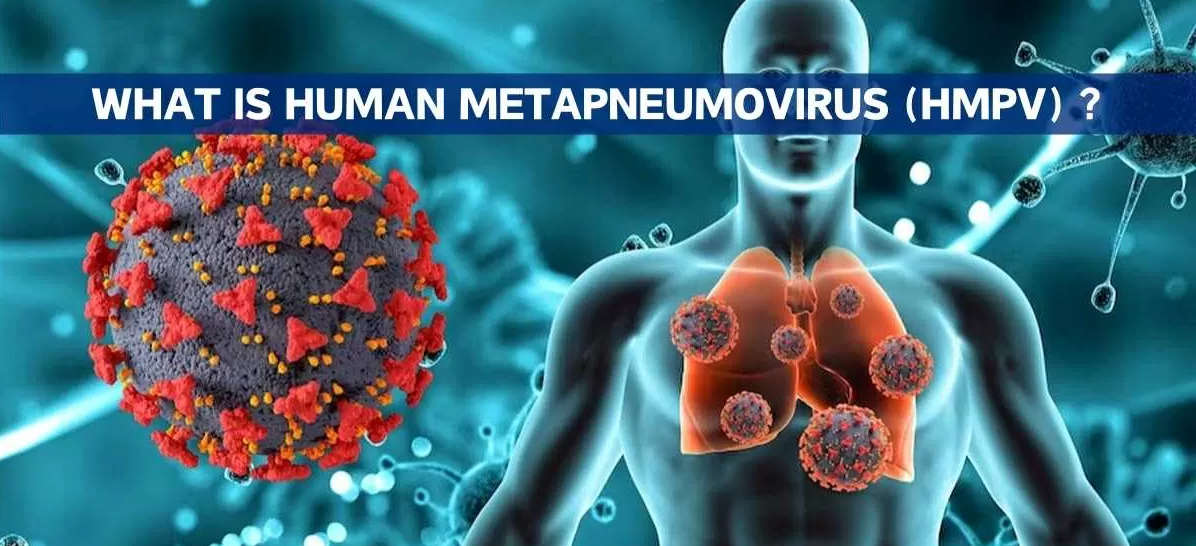Who is at risk from the virus?
HMPV can affect people of all ages, but certain groups are more vulnerable:
- Young children, especially those under 5 years old
- Older adults, particularly those over 65
- People with weakened immune systems
- Individuals with chronic lung or heart conditions
These groups may experience more severe symptoms and complications from HMPV infection.
What is the HMPV virus? Explained
Human Metapneumovirus (HMPV) is a respiratory virus belonging to the Pneumoviridae family. It was first identified in 2001 and has since been recognized as a common cause of respiratory infections worldwide. HMPV spreads through close contact with infected individuals, typically via respiratory droplets or contaminated surfaces.
What are the severe symptoms of HMPV?
While most HMPV infections are mild, some cases can lead to more serious complications:
- Severe pneumonia
- Acute respiratory distress syndrome (ARDS)
- Worsening of existing respiratory conditions like asthma or COPD
- Bronchiolitis in young children
- Hospitalization, especially for high-risk groups
What are the do’s and don’ts for avoiding HMPV?
To reduce the risk of HMPV infection:
Do’s:
- Wash hands frequently with soap and water
- Use alcohol-based hand sanitizers when soap is unavailable
- Cover your mouth and nose when coughing or sneezing
- Stay home when feeling unwell
- Keep surfaces clean and disinfected
Don’ts: - Don’t touch your face with unwashed hands
- Avoid close contact with people who are sick
- Don’t share personal items like towels or utensils
What are the symptoms of HMPV?
Common symptoms of HMPV infection include:
- Cough
- Fever
- Runny or stuffy nose
- Shortness of breath
- Wheezing
- Sore throat
- Fatigue
- Body aches
What is HMPV, and what are the symptoms, doctor explains
Dr. Mathew, an infectious disease specialist, explains:
“HMPV is a respiratory virus that causes symptoms similar to the common cold or flu. Patients typically experience coughing, fever, and nasal congestion. In more severe cases, especially in young children or older adults, it can lead to breathing difficulties and even pneumonia. It’s important to seek medical attention if symptoms worsen or persist.”
WHO Advice
The World Health Organization (WHO) recommends:
- Regular hand hygiene
- Proper respiratory etiquette
- Staying home when sick
- Seeking medical care if symptoms worsen
- Following local health guidelines
WHO on Risk Assessment
The WHO states that HMPV is a common cause of respiratory infections globally. While most cases are mild, they can cause severe illness in vulnerable populations. The organization continues to monitor HMPV alongside other respiratory pathogens as part of its global surveillance efforts.
HMPV Dangerous or Not?
For most people, HMPV causes mild to moderate respiratory symptoms. However, it can be dangerous for:
- Very young children
- Older adults
- People with weakened immune systems
- Those with chronic respiratory or heart conditions
In these groups, HMPV can lead to severe complications and hospitalization.
What is the public health advice for HMPV?
Public health authorities recommend:
- Practicing good hygiene
- Staying home when sick
- Getting vaccinated against other respiratory viruses like flu
- Seeking medical attention if symptoms worsen
- Following local health guidelines and advisories
Who is most vulnerable?
The most vulnerable groups for HMPV infection are:
- Infants and young children
- Adults over 65
- People with compromised immune systems
- Individuals with chronic lung or heart diseases
These groups should take extra precautions to avoid infection and seek medical care promptly if symptoms develop.
What you need to know about HMPV
Key points about HMPV:
- It’s a common respiratory virus
- Symptoms are similar to colds and flu
- Most cases are mild but can be severe in vulnerable groups
- No specific treatment, but supportive care helps manage symptoms
- Prevention involves good hygiene practices
- Seasonal peaks typically occur in late winter and early spring
Rise in respiratory infections ‘common’ during winter, says WHO
The WHO notes that increases in respiratory infections, including HMPV, are typical during winter months. This is due to factors like:
- People spending more time indoors in close contact
- Dry air affecting respiratory defenses
- Seasonal changes in immune system function
The organization emphasizes the importance of preventive measures and staying informed about local health situations during these peak seasons.











Leave a Reply